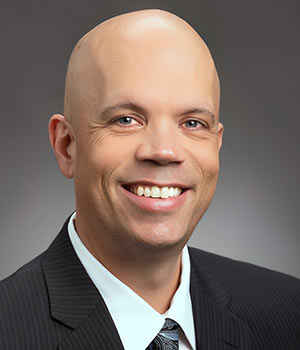I often marvel at the English language. So many words are available to describe context of all sorts. Words that can communicate success and others that outline failure. Words that prescribe danger while others that profess opportunity. In some cases, there are words that hold multiple meanings. Today we’re going to talk about a word that’s very prevalent in project management. A word that often has a negative connotation associated with it but also bears an equally positive meaning. Have you guessed it yet? Well, that word is risk.
Look up the word risk in the dictionary, and you’ll see such definitions as “possibility of loss or injury” or “someone or something that creates or suggests a hazard.” Oh, the negativity! Now, the “Project Management Body of Knowledge” defines risk as “an uncertain event or condition, that if it occurs, has either a positive or negative effect on a project objective. Well, that’s a little better. I think I even saw the word “positive” in there. Positive risk, otherwise known as an opportunity, is an uncertain yet favorable event that can positively impact a project in ways such as saving time or money.
Let’s face it; many projects contain a bit of both. What’s important to understand, however, is that there are some best practices in managing risk that can help you and your team each time, every time. Let’s spend a moment briefly describing some of those useful tactics.
Stakeholder Engagement
Organizations engaging in project management typically understand the need to effectively identify project stakeholders, be it management, customers, the community or the project team itself. However, it is less common to see organizations appreciate the importance of engaging those stakeholders. When asking stakeholders for their support on a project, make sure you take the time to measure their level of interest in the project and the influence they have on the project. Equally important is to understand the stakeholder’s preferred communication style, that is how they prefer having the information communicated.
Management Tone
As a former employee of an ethics and compliance consulting and eLearning company, I witnessed first hand the difference it makes in organizations when the senior or executive management team makes it a priority of doing the right thing. This includes setting the proper tone for risk management. Embracing a commitment to plan and execute an effective risk management program properly will pay dividends, time and time again.
Communication
“The single biggest problem with communication is the illusion that is has taken place.” – George Bernard Shaw.
Effective communication is a foundational element of a risk management program. Communication of risk is an ongoing activity that should exist throughout the life of your project. It is performed to help ensure that those people who are affected by risk or those who will take action to respond to the risk will have the right information at the right time.
Continuous Monitoring
Effective risk managers don’t typically engage in the behavior of “do it and forget it.” Rather, they engage in a more cyclical approach. Managing risk is a continuous process. Throughout the project lifecycle, project managers and risk managers alike should continuously monitor and assess previously identified risks for relevancy or change in status. Conversely, they should also be on the lookout for new risks that become relevant to the project.
Tools and Technology
My father always told me that having the right tool for the job can make the difference in completing a successful home improvement project over a weekend vs. weeks! Having the right tools in risk management is no different. Make a point to invest in technology to help you with managing your risks. Microsoft offers several useful tools to support your risk management needs. Microsoft Project and SharePoint offer out of the box lists in Project sites to track risks. Can you say Risk Register! Power BI offers Risk Reports that can report on risk data reported in Project sites as well as generate risk heat maps which provide insight into risks measured across scales of probability of occurrence and level of impact to the organization.
So, what’s the takeaway? Simple. The odds are good that most people you meet or work with on a new project will default to the negative side of risk. It’s just human nature. And don’t get me wrong, when you are engaged in your risk management activities, it’s important to recognize that there is plenty of negative risks that you must be ready to plan for and potentially address. The difference, though, is now you can be better equipped to manage that risk by using some or all of the tactics mentioned in this article.
Richard Wentworth, PMP, PMI-ACP, MCP, MBA, MPM, is a senior project advisor with Advisicon.


